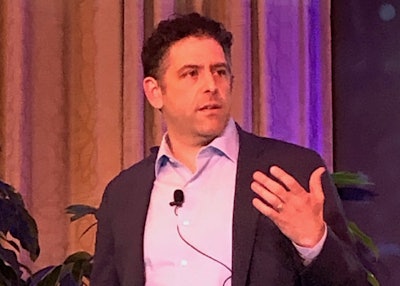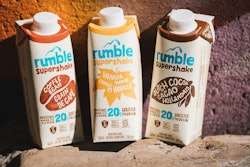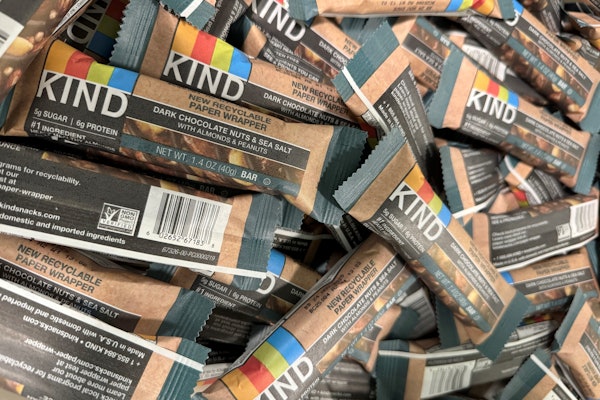There are five key megatrends that will affect the growth and profitability of players in the packaging industry over the next five to 10 years. Identifying them and learning how to capitalize on them was the subject of a presentation given by David Feber, Partner at McKinsey & Company, at The Packaging Conference, held February 4-6 in Las Vegas. Feber’s presentation provided a sneak peek at the insights gleaned in a soon-to-be-released report from McKinsey, “Packaging in 2030.”
“For most people in the industry, these megatrends are going to create headwinds or tailwinds,” said Feber. “The key is going to be figuring out how to manage those going forward.”
Before talking about the future though, Feber took a look at the past, noting that the past 10 years have been pretty strong for the packaging industry, particularly in plastics. Other trends have included changing competitive dynamics with a lot of consolidation and private equity entering the packaging space, an increased focus on resource efficiency, and a big economic boom in China and other developing economies that have made a difference in the consumption of consumer products.
“Looking ahead however there’s going to be a bit of difference,” he said, before launching into a discussion on the five megatrends. These trends, he said, are based on research with CPG companies, packaging companies, retailers, raw materials companies, and consumers.
1. Growth of e-commerce channel: Feber says McKinsey has identified a massive growth trend continuing to occur in e-commerce and direct-to-consumer shipping in a variety of different ways—from Amazon to retailers going direct. “It’s coming from a small base, so it’s still a bit of an enigma to the world, but it’s rapidly gaining steam,” he said.
According to Feber, online sales have grown 17% compared to other channels, historically. In 2016, groceries represented 2% of e-commerce sales. Last year, they were 3.4%. “So it’s still small, single digits, but that is a massive increase of the category penetration of online from two percent to 3.4 percent in two years,” he said. “That’s a factor of almost 1.8 in terms of growth, and that is continuing to increase.”
One of the considerations for e-commerce packaging is its robustness. Feber shared that a CPG packaging engineer he spoke with said that with retail packaging, such as a bottle, a drop test from six feet with five angles is required. For Amazon, that same product has to pass an 18-angle drop test. “Very few consumer packages have been developed for that kind of robustness,” said Feber. And packagers will have to balance that with lightweighting, sustainability, and cost considerations.
2. Rapidly changing consumer and customer preference: An increase in consumer customization and personalization of products has resulted in a massive expansion of SKU production. “If you walk into a big-box retailer or Walmart or a big grocery store, you tend to see 10 to 15 different products on the shelf of a given category. When you go to Amazon, you can see up to 2,000 different products in a category. And it’s really feeding this consumer desire for variety and customization. What you’re seeing is that the world’s changing, and consumers are desiring more,” said Feber.
3. CPG and retail margin compression: Many CPGs are losing the battle for shelf space and margin growth, which is increasing pressure on suppliers such as packaging manufacturers to decrease cost. “That is likely to continue and will likely have consequences on the full value chain that’s selling into consumer packaged goods,” said Feber.
In addition, a shift is taking place in terms of which companies are gaining share in categories, with small and medium-sized brands growing dramatically over the larger brands in their categories. “It’s occurring everywhere, and it’s changing the way a lot of us are positioned, in terms of our companies and the assets and who we sell to and how we design product, and it’s putting a requirement on us to become a bit more agile,” said Feber. “The more agile players will likely be the ones that pick the right winners going forward.”
He emphasized that these trends are putting downward pressure on margins. Store sales are decreasing, and that’s trickling all the way through to EBITA and return on investment capital within retail and within CPG. “It is a real challenge for the industry, which is why you see a lot of pivoting and a lot of diversification,” he said. “It’s going to continue to create a lot of pressure back on the channel on packaging, in terms of cost effectiveness, in terms of making sure packaging is really enabling a brands’ narrative and all the elements of that that are required.”
4. Increased pressure on sustainability: For the first time in a long time brands are making serious commitments to make a difference, said Feber, and the consumer perception in this area has grown almost exponentially in terms of how frequently sustainability is mentioned. As a result, Feber said, regulations have continued to grow fairly rapidly across the world.
Over the past 12 to 15 months, public awareness of plastics leakage into environment has increased significantly to an all-time high. “This is one indicator of what’s really driving a lot of the sustainability sensitivity across the industry and across the world,” Feber said. “This is really going to create unprecedented change.”
In response to the public outcry regarding plastics, governments have increased legislation around packaging. However, they don’t always “get the science right,” Feber said. As a result, some government regulation is great, and it drives the intended changes, while some is not scientifically based and doesn’t alleviate issues at the end of the day, even though it addresses consumer concerns.
“The opportunity for the packaging industry is to find cost-effective ways to make things more sustainable,” Feber said. “Lightweighting for years has been the easy way. It wasn’t easy to achieve, but it was easy, because you use less plastic, and so everybody’s happy. Going forward, the challenge on the industry is to continue to pedal fast and come up with ways that are cost effective.”
5. Digitalization of packaging or IoT: The IoT of packaging is opening up new ways for companies to interact with customers and improve the supply chain. There are emerging technologies for packaging, but it’s still in its infancy. Said Feber, digitization is coming into every area of industrial world, it’s going to come into packaging. “It’s a big debate as to whether it will be in five years or 15 years, but at some point it will catch up.
So what can companies do to meet these challenges? “Number one is the investment in R&D and innovation,” Feber said. “Some of these products change very fast, but most of them have a very slow adoption, given risk aversion to change and high volumes, and if you’re on the machine side, it’s painfully slow because all of those are magnified. So the time to start innovating is now and to push your companies to think about where you should be spending your innovation dollars.”
Second, is to create more agile processes to adjust to SKU proliferation. A lot of packaging companies are set up for efficiency and high throughput, Feber notes, but the world is slowly changing to a lot more customization and SKU proliferation. So companies are going to need to be more agile and more flexibile to play in these spaces.
Another way to meet the challenges of the five megatrends is through collaboration with CPGs and retailers. Said Feber, “Everyone is struggling with this, or has a lot of uncertainty about what’s going to happen. There’s a sense that a lot of change is coming, but there isn’t a lot of clarity on what exactly is going to occur. Partnering with players down the channel is more important than ever. What it really means is finding the right partners within your customers’ businesses to partner with. It might not be the procurement person who’s going to tell you about the trends four years from now that you need to be thinking about. If there are other people within the company, whether in marketing, whether they’re on the brand side, whether they’re in innovation, who are thinking about this, the key is to connect with them.
The last thing is just to understand the future of sustainability and its impacts on your product line. “Are you thinking about where you position yourself relative to where the trends are going and how can you modify or pivot your product line to make sure that you capitalize on that.”
Read full coverage on the conference at "New markets, megatrends bring business opportunities"


























